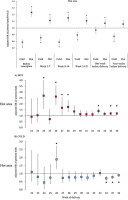当前位置:
X-MOL 学术
›
Sci. Total Environ.
›
论文详情
Our official English website, www.x-mol.net, welcomes your feedback! (Note: you will need to create a separate account there.)
The association between ambient temperature and the risk of preterm birth in China
Science of the Total Environment ( IF 9.8 ) Pub Date : 2017-09-14 , DOI: 10.1016/j.scitotenv.2017.09.104 Tongjun Guo , Yuanyuan Wang , Hongguang Zhang , Ya Zhang , Jun Zhao , Yan Wang , Xiaoxu Xie , Long Wang , Qian Zhang , Dujia Liu , Yuan He , Ying Yang , Jihong Xu , Zuoqi Peng , Xu Ma
更新日期:2017-09-15
Science of the Total Environment ( IF 9.8 ) Pub Date : 2017-09-14 , DOI: 10.1016/j.scitotenv.2017.09.104 Tongjun Guo , Yuanyuan Wang , Hongguang Zhang , Ya Zhang , Jun Zhao , Yan Wang , Xiaoxu Xie , Long Wang , Qian Zhang , Dujia Liu , Yuan He , Ying Yang , Jihong Xu , Zuoqi Peng , Xu Ma

|


























 京公网安备 11010802027423号
京公网安备 11010802027423号